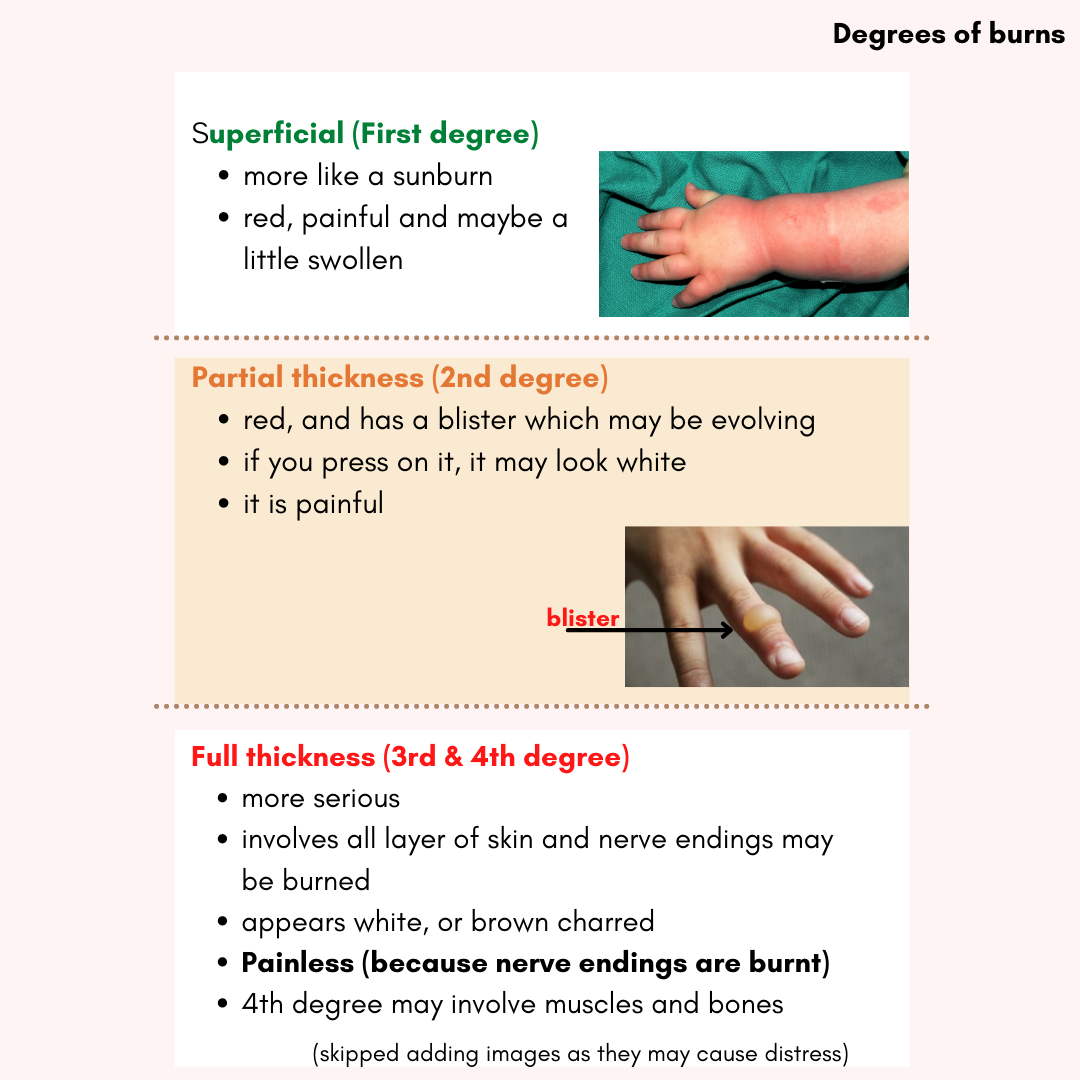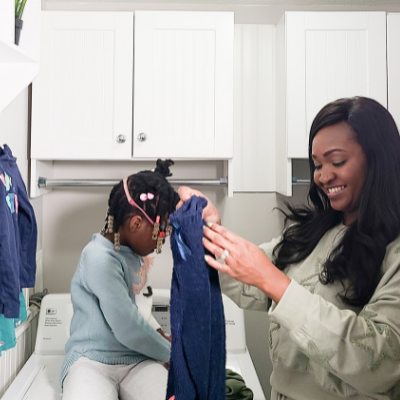First Aid for Burns
(video of first aid burn care at the end)
Imagine relaxing at home with your hot drink, soup or noodles in a bit to warm yourself up from the chilly weathers; then your little one pulls it down, right on them![]() . Would you know what to do if your child ever sustained a burn?
. Would you know what to do if your child ever sustained a burn?
As parents, we never want our children hurt, but no matter how careful we are, accidents sometimes happen. It is always key to be prepared and know how to manage burns before seeking medical care.
In the ER, we see quite a number of children with burns. Rates of burns usually increase during the cold weather season as most family resort to hot/warm drinks and food to make themselves feel better.
About 75% of burns in children are from hot liquid, tap water or steam and others from touching hot surfaces such as Iron or hot hair appliance.
Young kids are curious and exploratory by nature so they will easily pull hot cup of food from the table (when you turn around for a quick second); try to pull your noodles, grab your hot comb (if you forget to put it away); or even put a bobby pin into an electric outlet.

So burns are not uncommon ![]() .
.
While we highlight prevention a lot, I want you to always know what to do if your child unfortunately gets burned. Your first aid treatment will go a long way to affect the way it heals.
Treatment
Burns are treated based on the severity and type of burn
There are 3 main levels of burn:
- Superficial (1st degree burn): this looks like a sunburn. Appears red but DOES NOT blister. Usually needs no main treatment
- Partial thickness (2nd degree): The first layer of skin (epidermis) and some parts of the 2nd layer (dermis) is burned. Skin turns red and also develop painful blisters
- Full thickness (3rd or 4th degree): This is the most severe because the top 2 layers of skin are completely damage. Skin looks white or charred and usually doesn’t hurt.

First aid Treatment
The first aid treatment for all burns are the mostly same. Subsequent care depends on the type as listed above
Think about it this way: Console, Cool, Cover, Call, Manage pain
Console
When a burn occurs, both you and your child are scared and stressed. Console your child in a quick second while you carry them to the closest (or most comfortable) source of water.
Remove clothing and soaked DIAPERS at the same time. Soaked diapers contain a lot of warm fluid that continue to cause injury
If clothing is stuck, don’t peel it off, the medical providers will remove it gently.
Cool
Immediately, place the area under running cool tap water. This helps remove the heat and prevent progression of the burn. You should aim to do this for 20 minutes.
If your child is anxious, consider taking them into the bath with you
Do NOT use ICE OR COLD because this can also cause a cold burn and further damage the tissue
Avoid immersing in water only, you want to use running water over it.
Avoid popping the blisters (if any) because this can increase risk of infection.
 Cover:
Cover:
After running it under running cool water, cover the burn with a non-stick dressing or a cling film
This makes it easy to remove when you get to the hospital
Place pieces of cling film on the burn area and DO NOT wrap the cling film completely round the area burned. Burned areas will swell and get painful
Call:
Speak to your provider on further care or call the ambulance services if needed.
In some emergency scenarios, you should call your provider or emergency services while you are cooling the burn area under water, to save sometime.
Manage pain
Don’t forget that burns hurt, so feel free to give your child some pain medication BUT nothing else. If your child needs ER care, they may receive medications that make them sleepy so avoid any feeding before they get seen
What not to apply to burn
Do not apply:
- Toothpaste
- Butter, Milk
- Egg
- Lotion
- Calamine lotion
- Steroid cream (e.g hydrocortisone)
- Ointments (unless advised by your provider- see options below)
Most of these damage the skin and also get stuck on wounds before your provider sees it. That can cause more discomfort for your child.
What to apply to mild burns at home.
First degree burns only need moisturizer to heal. Some home topical creams or ointments such as Manuka medical honey, Aloe vera, Cicaplast may be used.
Second degree and deepr burns need to be seen by a provider. Avoid applying anything to your child’s burns prior to being seen by a provider or if you are going to the ER. These usually need to be wiped out to assess the burns and may cause discomfort if stuck on it.
Estimating size of a burn
A good way to estimate size of burn if using your child’s palm. Any burn that is larger than your child’s palms needs to be seen (this may not always be reliable).
Other burns that MUST be seen immediately regardless of size
Electrical burns
Burns to the face, genitals, hands, foot,
Burns over a joint
Inhalation burns
I hope you found this helpful for your little one. Prevention is always important but being prepared is also….
These are great options of burn care products I love. All images are clickable and lead to shopable affiliate links.
More on Amazon storefront : Dr Nkeiru’s Amazon Page
You may also like these posts

Bug spray- How to choose? Do’s/ Don’ts
How to choose bug spray for your kids? -what age to start? -when to use?(this blog contains affiliate links. Links are at no cost to you) It's a fact...

Poison Prevention Week
Poison Prevention week: Cleaning & laundry packet safety. (in partnership with American Cleaning Institute (ACI)(Remember to watch video at the end) It’s not uncommon for me to come in for my...

Bug spray- How to choose? Do’s/ Don’ts
How to choose bug spray for your kids? -what age to start? -when to use?(this blog contains affiliate links. Links are at no cost to you) It's a fact...




